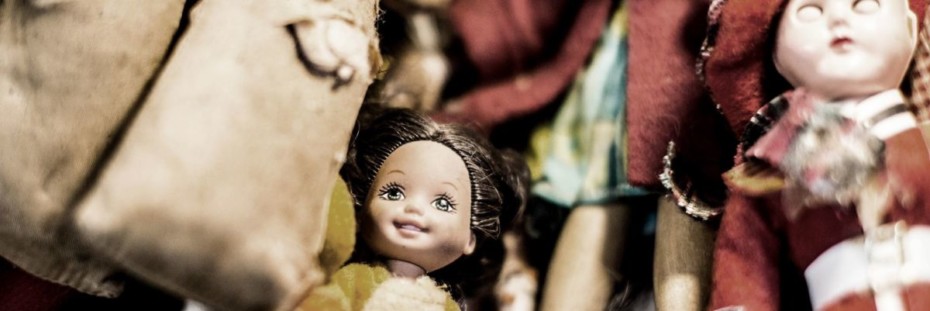“Piglet sidled up to Pooh from behind.
“Pooh!” he whispered.
“Yes, Piglet?”
“Nothing,” said Piglet, taking Pooh’s paw. “I just wanted to be sure of you.” A.A. Milne, The House at Pooh Corner
One of the defining characteristics of play is that it becomes this ‘enigmatic withdrawal from the everyday’, ‘a stepping out from “real” life into a temporary sphere of activity with a disposition all of its own’. A look at the world of toys shows that children possess the ability to translate any ordinary setting into an imaginary and exciting world. Especially the items that are old, independent from their sacred origins, these are liable to becoming a toy. Children dancing in our living room transforms its somewhat narrow and limited space into a broad and wide stage.
Here are our spaces of participation. Our spaces of inclusion. Our spaces of rehearsal. I close my eyes. I breathe deeply. The muffled laughter in our living room is in a language I don’t always understand but in tones that I do. Such expressions are at once about the source of the sound and the space in which they are expelled and circulate. There is no reason to oppose an interior to an exterior. No reason to think of breath and air or sound and speech as alternate. Everything said in this narrowness is ‘enigmatic’. It’s muffled words take me somewhere new. My own suspended breath is equally loud. Deleuze would note a moment in poetry where “[t]he entire language spins and varies in order to disengage a final block of sound a single breath at the limit of the cry, Je t’aime passionnément (‘I love you passionately’)”. (1)
We free our narrow rooms through the tools of design. We come here as one thing. We leave as another. We move outside ourselves by fixating on the soft line of a narrow timber bench set against the curvature of Pooh’s paw. This living room might say I love you, not as a lover does; but as intense as a lover might. In truth the creator of toys and the building designer give us confidence to take our humanity seriously, and in ways that we might otherwise never have thought to acknowledge. For example: how might these tools of design allow a narrow space that is generous, and in so doing, perceptually enlarge the experience of an otherwise slender and limiting space?
There is nothing self-conscious about the use of materials in our narrow living room. What is wood is wood; what is tin is tin; and what is cast is beautifully cast. Like the handrail on the bridge across to the Querini Stampalia Foundation in Venice that curves in your palm like an oar. What is clear though, is that our delight is found in confrontation with the directness of things. Piglet and Pooh are made up of qualities, substances, and events. Our narrow living room, with its dancing muffled noises, and its dramas. becomes an opening to new ways of thinking about life and by so doing creating new ways of living. The generosity of our narrow living room along with Piglet and Pooh, is not only greatly appreciated but a necessity.
1. Gilles Deleuze and Félix Guattari, Anti-Oedipus, (Minneapolis: University of Minnesota Press, 1983), 170 and 4 (respectively). Translated from L’Anti-Oedipe, (Paris: Les Editions de Minuit, 1972), Volume 1 of Capitalisme et Schizophrénie, by Robert Hurley, Mark Seem and Helen R. Lane.
